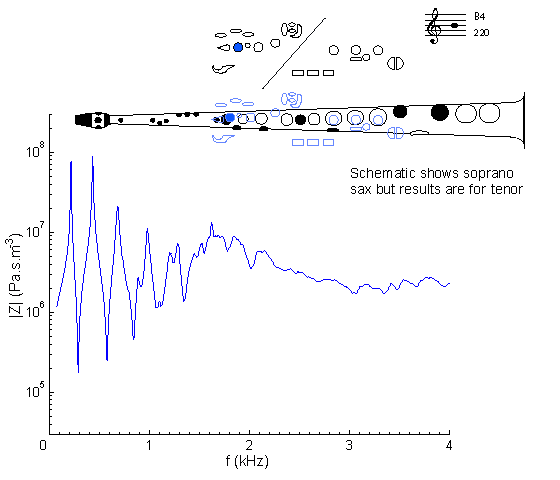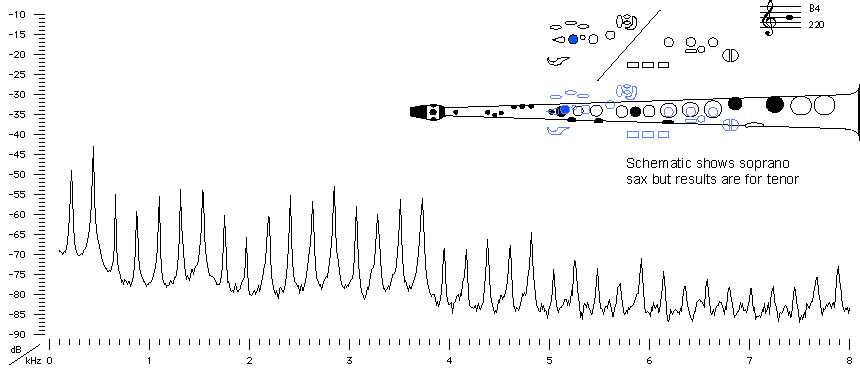| Acoustics of the saxophone |
Bb tenor saxophone |
B4 |

|
Fingering Acoustic schematic Non-specialist introduction
to acoustic impedance Notes are the written pitch. |
At frequencies below about 1 kHz, this curve looks rather like that for A#4, but raised in frequency. At higher frequencies, however, the situation is complicated by the cut-off frequency. Here we have only two peaks that fall in the harmonic series: this fingering will bugle an octave, but no other note in the series. Above this frequency, the spacing of peaks in the upper part of the curve roughly equals that in the curve for the lowest note, A#3. This is because, at high frequency, the wave propagates past the open tone holes, reflecting only at the bell.
For general comments about the first register, see A#3. Compare with the impedance spectrum for a soprano sax on written B4: same fingering but sounding one octave higher.

Sound spectrum
of a Bb tenor saxophone
played using fingering for B4.
For more explanation, see
Introduction to saxophone acoustics.
|
Contact:
Joe Wolfe
/ J.Wolfe@unsw.edu.au |